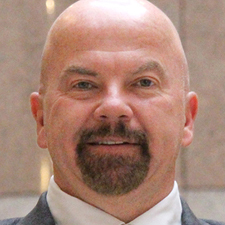State Representative Joe Gresko, (D)
121st Connecticut House District
I am pleased to report that responsible budgeting and major structural changes made to pension and teachers’ retirement’s plans are putting Connecticut on much more solid fiscal ground and saving taxpayers billions in debt payments.
The Office of Policy and Management noted the teachers’ retirement unfunded liability has been reduced by a billion dollars in the last year. Combined with other recent deposits, the state will save $9.4 billion over the next 25 years.
Millions of dollars that would have otherwise gone to debt payments can be freed up to continue investments in childcare, mental health, higher education, and workforce training, improving the quality of life for all residents.
In a CT Insider Article by Ken Dixon this week on the pensions and retirement plans he stated:
Lawmakers on the legislative budget-setting committees on Monday got a raft of good news as they head into next month’s new session with a nearly billion-dollar budget surplus and historic investments in the under-funded pension programs for state employees and public school teachers.
During a two-hour presentation-and-question session with members of the Finance Committee and the Appropriations Committee, Gov. Ned Lamont’s budget office and the non-partisan Office of Fiscal Analysis agreed that higher-than-expected revenue, which increased by 7 percent in the budget year that ended June 30, is expected to continue.
“The teachers’ retirement unfunded liability has been reduced by a billion dollars in the last year,” said Jeffrey Beckham, who as secretary of the Office of Policy and Management is Lamont’s budget chief who is currently working on a two-year budget proposal that Lamont will submit to the General Assembly in February. “And the Teachers’ Retirement System funded ratio has increased from 51 percent to 57 percent.” The pension obligations have been reduced by $7 billion in recent years, he said.
The State Employee Retirement System, he said will soon reflect the $3.2-billion investment of surplus revenue required whenever the $3-billion-plus emergency reserves reach their maximum. More than 30 percent of the state budget is long-term debt for capital expenditures totaling $27 billion.
In recent years, major structural changes were made to the pension plans, including re-amortizing the funds’ debt over a new 30-year period, and projecting more-realistic investment returns of 6.9 percent, Beckham said. “In the last couple of years we have made enough deposits that have saved $9.4 billion over the next 25 years,” Beckham said, noting that last year, there would have only been a $3 billion savings over the next quarter century.
Last spring, the General Assembly approved budget adjustments to the second year of the biennium totaling $22.4 billion. State Sen. Cathy Osten, co-chairwoman of the Appropriations committee said that the overall financial picture is good. Rep. Sean Scanlon, D-Guilford, the co-chairman of the Finance Committee who will leave the legislature to become state comptroller, agreed.
“It’s great to see a report like this,” Scanlon said. “It’s something we should be celebrating.” State Sen. Henri Martin of Bristol, a top Republican on the Finance Committee, agreed. “It’s very encouraging to see positive numbers,” Martin said. Sales and use taxes have increased in double figures.
“Essentially, revenue is growing faster than fixed costs,” said Neil Ayers, director of the Office of Fiscal Analysis, expecting an additional $2.8 billion to be invested in the two pension programs. He said that the “budget puzzle” facing the General Assembly while it crafts a new two-year spending package in the spring of 2023, is the projected small $6.7 million surplus in the budget that starts July 1, 2023.
State Sen. Craig Miner of Litchfield, a top Republican on the Appropriations Committee who did not seek reelection, said that in his 22 years in the legislature, this could be the most-positive fiscal report he has seen, crediting the bipartisan state budget of 2017 that established “guardrails” on spending and investments in the emergency reserves and pension plans that Backham said Lamont plans to extend.
Still, state Sen. John Fonfara, D-Hartford, the veteran co-chairman of the Finance Committee, warned that with more than 50 percent of state spending from fixed costs, the state budget still offers challenges to the next legislature, which convenes on January 4. “We don’t talk about how to grow the economy that much,” Fonfara said.
Beckham complained that the state is having trouble hiring new employees, particular doctors and nurses. “There is no effort to downsize the workforce,” he said. “None. We are trying as hard as we humanly can to fill every position that our agencies need to deliver those services. The governor expects that we delivery them. We are facing an historically difficult labor market. For reasons that I don’t understand it’s hard to attract people to work at this point in our historic.
While our fiscal outlook is good, we remain cautious, and remain disciplined in our budgeting. I will continue working with my colleagues to help make sure we set realistic expectations for our revenue and spending policies to keep our state moving in the right direction.
As always, please feel free to reach out to me at the Capitol at 800-842-0363 or email me at Joseph.Gresko@cga.ct.gov.

